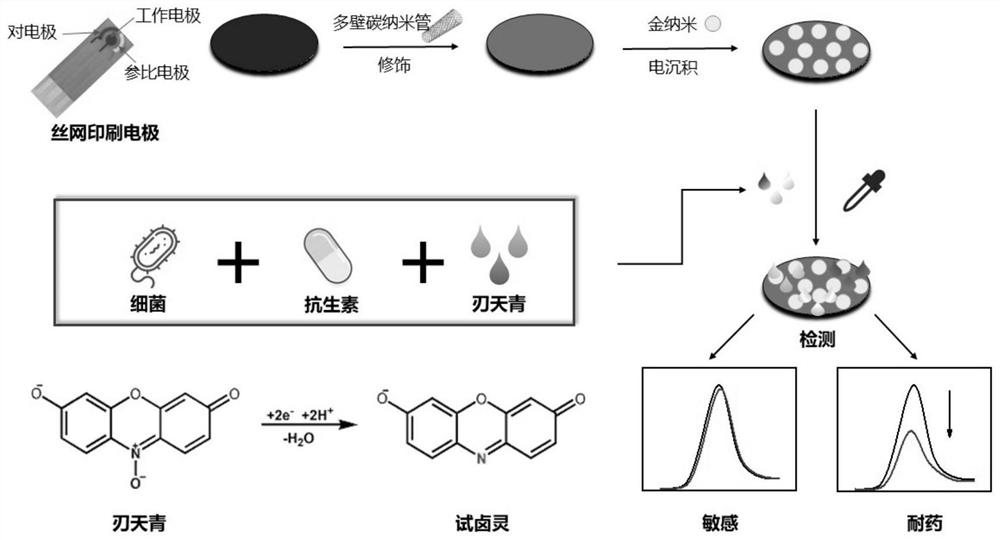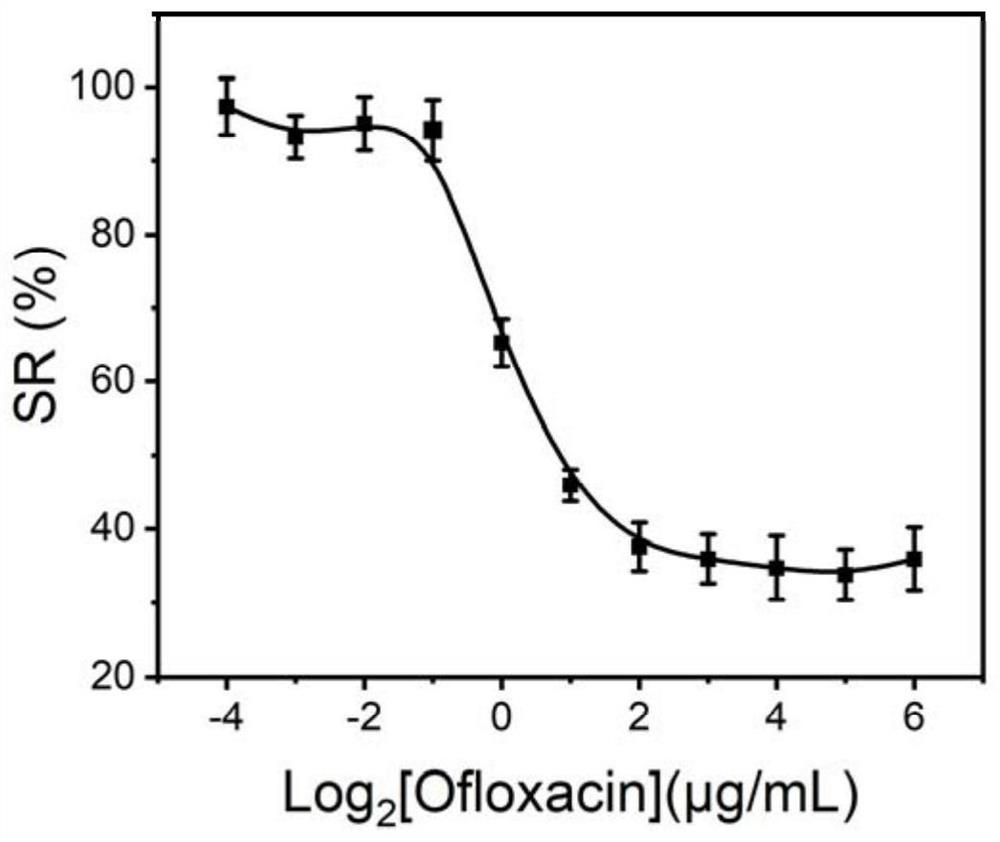A kind of electrochemical detection method of bacterial drug resistance
An electrochemical and drug resistance technology, applied in the direction of biochemical equipment and methods, electrochemical variables of materials, measurement/inspection of microorganisms, etc., can solve the problems of complex instruments, long detection time, mixed steps, etc. Simple, low-cost, fast results
- Summary
- Abstract
- Description
- Claims
- Application Information
AI Technical Summary
Problems solved by technology
Method used
Image
Examples
preparation example Construction
[0031] Preparation of modified screen-printed electrodes:
[0032] (1) First modify the multi-walled carbon nanotubes on the surface of the screen-printed electrode. The modification method: activate the screen-printed electrode in 0.5mol / L iron-sulfuric acid solution, scan by cyclic voltammetry, and the voltage is -0.2V ~0.6V, scan rate: 50mv / s, scan cycle: 10; configure 1mg / mL multi-walled carbon nanotube solution, ultrasonic for 30min, after it is mixed evenly, drop-coat it on the surface of the activated screen printing electrode , let it dry naturally at room temperature;
[0033](2) Modify the nano-gold particles by electroplating, the modification method: immerse the multi-walled carbon nanotube screen-printed electrode in 10mL of gold-plating solution containing 1% chloroauric acid and 1mmol / L sulfuric acid solution for gold plating, using time current method, electroplating voltage: -0.3V, electroplating time: 100s; finally, immerse the screen-printed electrode in aq...
Embodiment 1
[0035] (1) Bacteria treatment:
[0036] Salmonella typhimurium ATCC14028 was cultured with NB medium in a shaker at 37°C, and then the turbidity was measured with a bacterial turbidity meter after deducting the background, and then converted into the original concentration of the bacterial solution. According to the original concentration, the bacterial solution was diluted to 7.5×10 with NB medium 5 cfu / mL. Then add resazurin and different amounts of antibiotic ofloxacin to mix, shake and incubate in a metal bath at 37°C for 4 hours; the concentration of resazurin in the solution is 0.2mmol / L, and the concentration of antibiotic ofloxacin is respectively 128, 64, 32, 16, 8, 4, 2, 1, 0.5, 0.25, 0.125 μg / mL. At the same time, prepare an identical bacterial solution for control experiments without antibiotics.
[0037] (2) Drug resistance detection:
[0038] To detect bacterial resistance, the above-incubated solution was filtered through a 0.22 μm filter to remove bacteria,...
Embodiment 2
[0041] (1) Bacterial treatment:
[0042] Staphylococcus aureus ATCC6538 was cultured with NB medium in a shaker at 37°C, and then the turbidity was measured with a bacterial turbidity meter after deducting the background, and then converted into the original concentration of the bacterial solution. According to the original concentration, the bacterial solution was diluted to 7.5×10 with NB medium 5 cfu / mL. Then add resazurin and different amounts of antibiotic ofloxacin to mix, shake and incubate in a metal bath for 4 hours at 37°C; the concentration of resazurin in the solution is 0.2mmol / L, and the concentration of antibiotic ofloxacin is 128, 64, 32, 16, 8, 4, 2, 1, 0.5, 0.25, 0.125 μg / mL. At the same time, prepare an identical bacterial solution for control experiments without antibiotics.
[0043] (2) Drug resistance detection:
[0044] To detect bacterial resistance, the above-incubated solution was filtered through a 0.22 μm filter to remove bacteria, and then the ...
PUM
 Login to View More
Login to View More Abstract
Description
Claims
Application Information
 Login to View More
Login to View More - R&D
- Intellectual Property
- Life Sciences
- Materials
- Tech Scout
- Unparalleled Data Quality
- Higher Quality Content
- 60% Fewer Hallucinations
Browse by: Latest US Patents, China's latest patents, Technical Efficacy Thesaurus, Application Domain, Technology Topic, Popular Technical Reports.
© 2025 PatSnap. All rights reserved.Legal|Privacy policy|Modern Slavery Act Transparency Statement|Sitemap|About US| Contact US: help@patsnap.com



